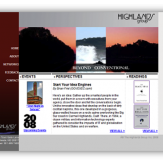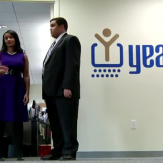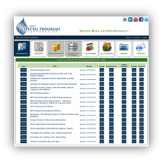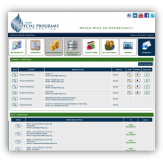Client
NASA’s Direct Readout Laboratory (NASA DRL) Portal provides the Direct Readout (DR) community with easy access to Earth remote sensing data and technologies through shared information resources. Direct Readout (DR) is the process of acquiring freely transmitted live satellite data. As Direct Readout technologies have become more affordable and accessible (such as with the onset of the Internet), tools have been developed by the remote sensing community to make satellite data easier to acquire, process, and utilize. As a member of this community, NASA supplies many of these tools to foster global data exchange and scientific collaboration. Live local and regional environmental data, in turn, benefits environmental, commercial, and public interest decision making.
Requirements:
- To redesign the NASA DRL website to make it more visually appealing
- To design the new site in a manner that it improves the site navigation of the users
- To facilitate DRL staff to enter the content of the website
Solution:

DRL approached MMG team to help them with their above mentioned requirements. After carefully going through the requirements, MMG team decided to use the following approach:
MMG team designed the new looking DRL website keeping in mind the NASA website theme and color combination. As a result, the new DRL website now looks like a part of NASA site (which it did not earlier although being part of NASA). The site architecture was changed completely to help with better site navigation. MMG team used the card sorting technique to decide the navigation flow of the new DRL site. It helped in searching information quickly and easily. A test was conducted on a small user set to find out the difference in information retrieval with the new and old website. The information retrieval on new website was significantly faster. MMG team developed a flash video for the home page to explain the Direct Readout process in a clear manner.
For the third DRL requirement, MMG team decided to develop a customizable content management system (CMS). CMS was controlled and administered by specific set of Admin users only. Each static DRL page was converted to a dynamic page controlled by CMS. DRL site had few pages which needed login and password. A section was created in the CMS for the password protected pages. Once the admin user successfully logged in, he/she could add, edit or delete new or existing pages. CK Editor was used to enter the text on each page. As a result, it made it easier for the DRL users to enter any information without having the knowledge of HTML. An approval system was developed to avoid accidental update of any page.
Major Achievements:
- A modern looking web 2.0 based social media friendly website built in less than 2 months
- The new website improved user navigation and also helped user find relevant information in a shorter time
- To make the website social media friendly























